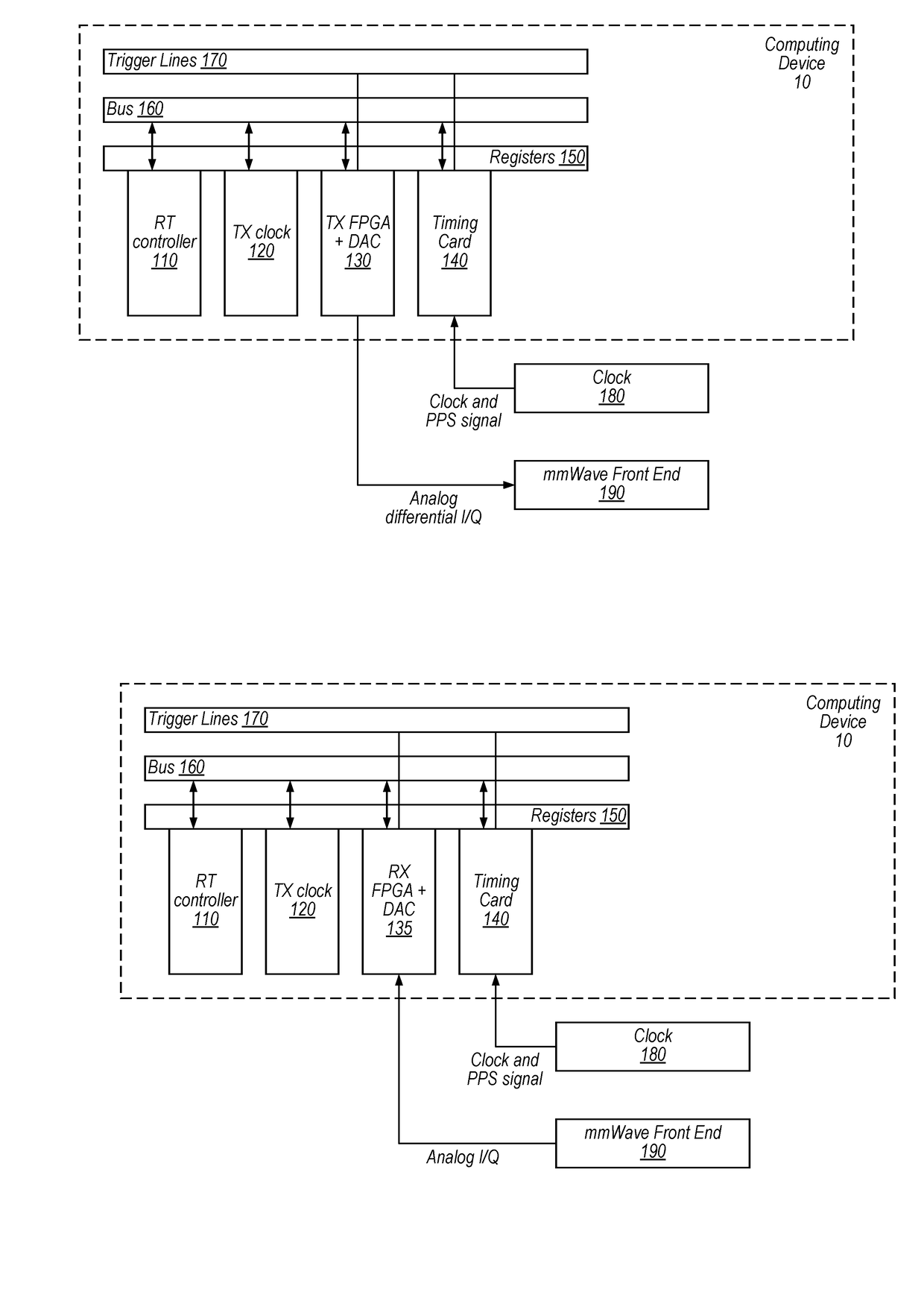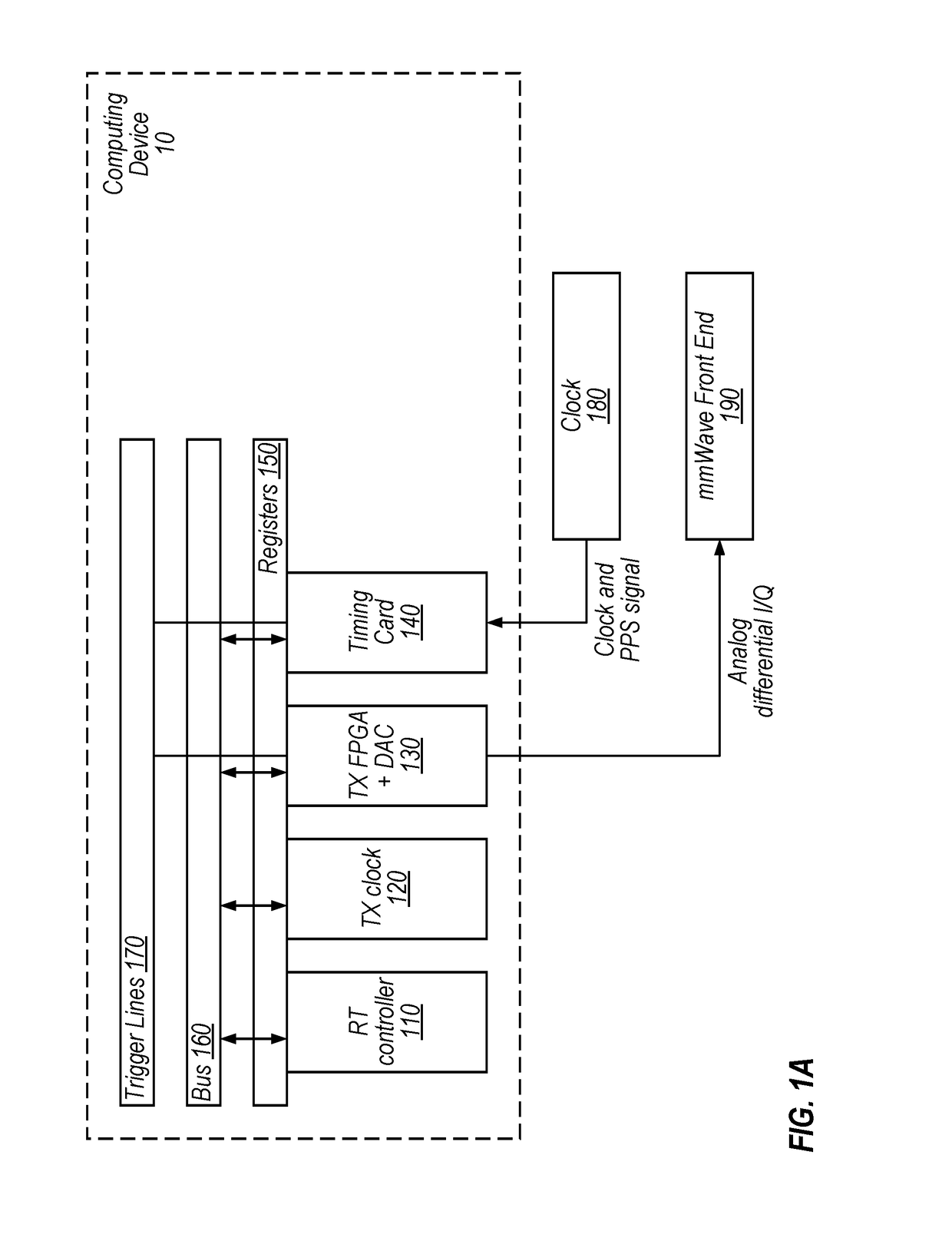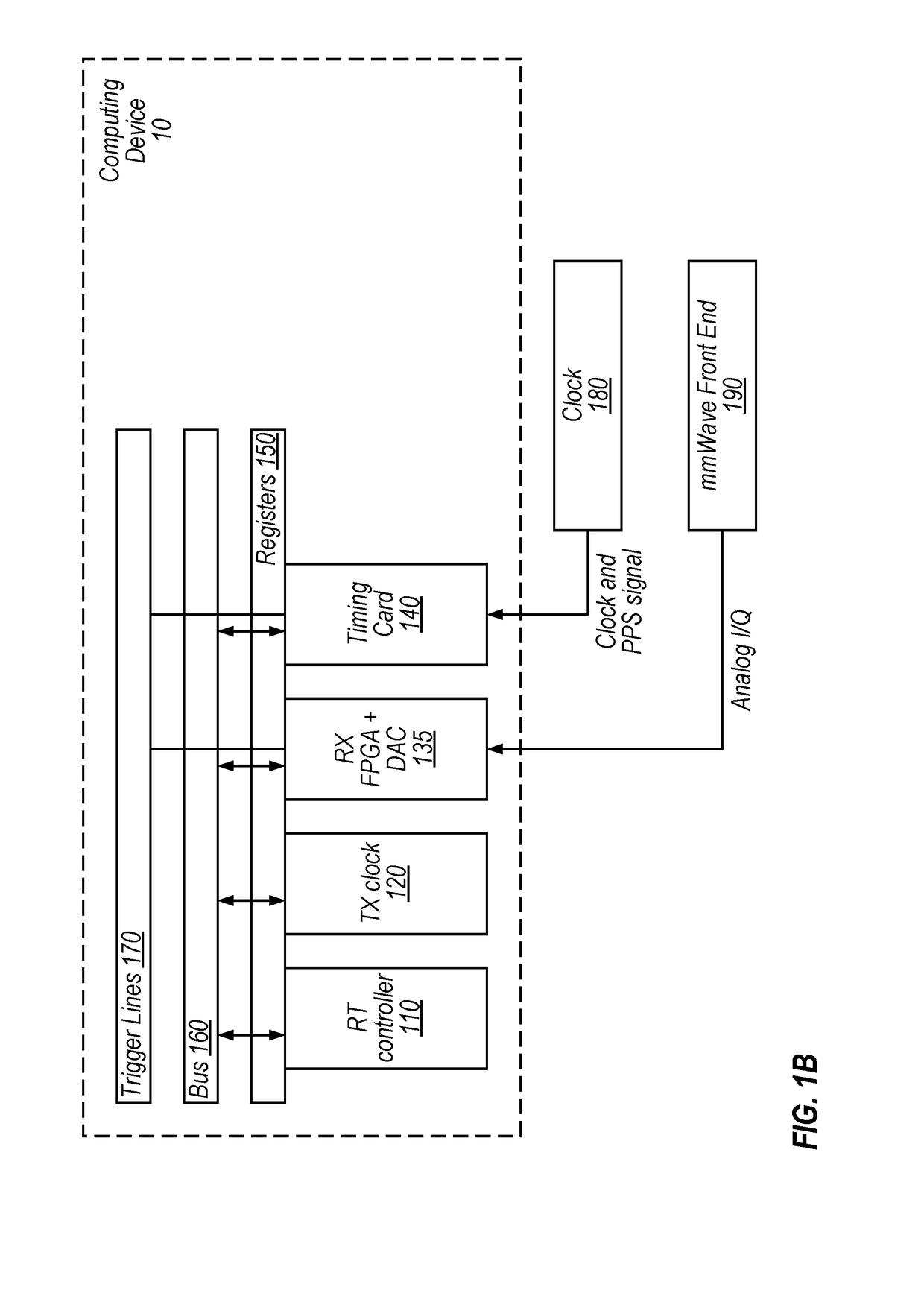Channel Sounding Techniques
a channel sounding and channel sounding technology, applied in multiplex communication, synchronisation arrangement, baseband system details, etc., can solve the problems of wireless radio communications that can be significantly affected, problems in conventional channel sounding systems, etc., to improve channel sounding accuracy and reduce channel sounding time.
- Summary
- Abstract
- Description
- Claims
- Application Information
AI Technical Summary
Benefits of technology
Problems solved by technology
Method used
Image
Examples
Embodiment Construction
[0018]In various embodiments, a wireless transmitter is configured to transmit wireless signals in a wireless environment that are then received by a receiver and processed to determine channel information for the environment. In some embodiments, the transmitter transmits a repeated sequence and the receiver receives a circularly-shifted sequence. The repeated sequences from the transmitter may be periodic within the coherence time of the wireless channel.
[0019]FIG. 1A is a block diagram illustrating an exemplary channel sounding transmitter, according to some embodiments. In the illustrated embodiment, the transmitter receives a clock signal and a pulse-per-second (PPS) signal from clock circuitry 180. For example, the clock signal may be generated at 10 MHz using a Rubidium (Rb) clock. In other embodiments, any of various appropriate types of clocks, frequencies, or other characteristics may be used for these timing signals. In the illustrated embodiment, the transmitter is confi...
PUM
 Login to View More
Login to View More Abstract
Description
Claims
Application Information
 Login to View More
Login to View More - R&D
- Intellectual Property
- Life Sciences
- Materials
- Tech Scout
- Unparalleled Data Quality
- Higher Quality Content
- 60% Fewer Hallucinations
Browse by: Latest US Patents, China's latest patents, Technical Efficacy Thesaurus, Application Domain, Technology Topic, Popular Technical Reports.
© 2025 PatSnap. All rights reserved.Legal|Privacy policy|Modern Slavery Act Transparency Statement|Sitemap|About US| Contact US: help@patsnap.com



